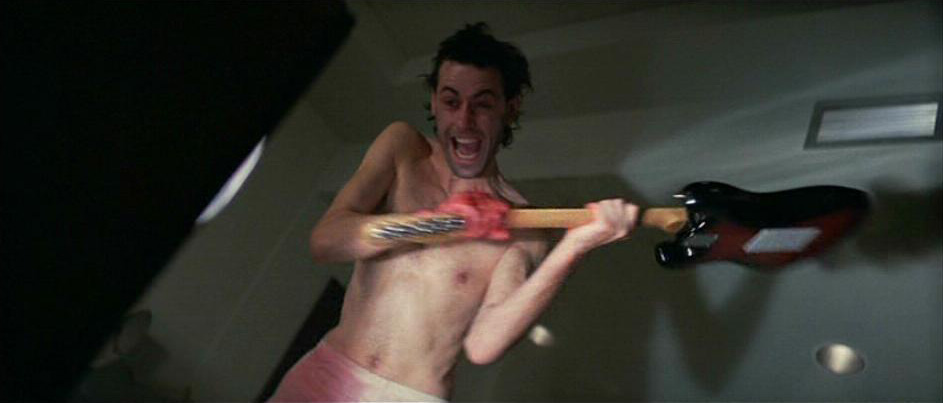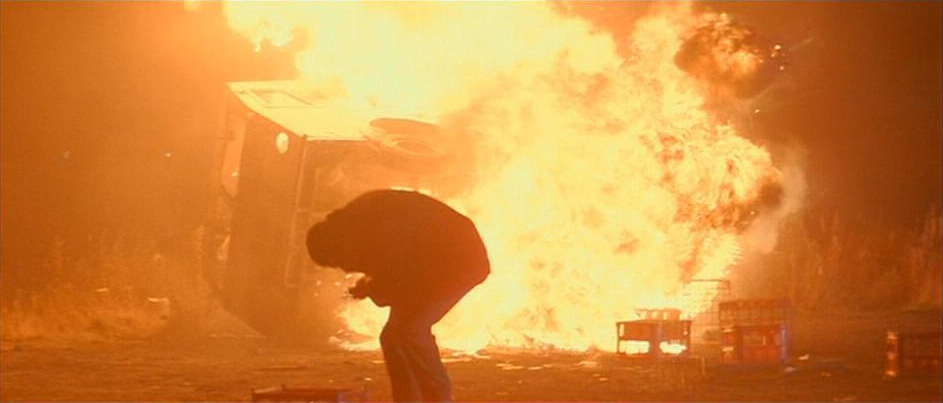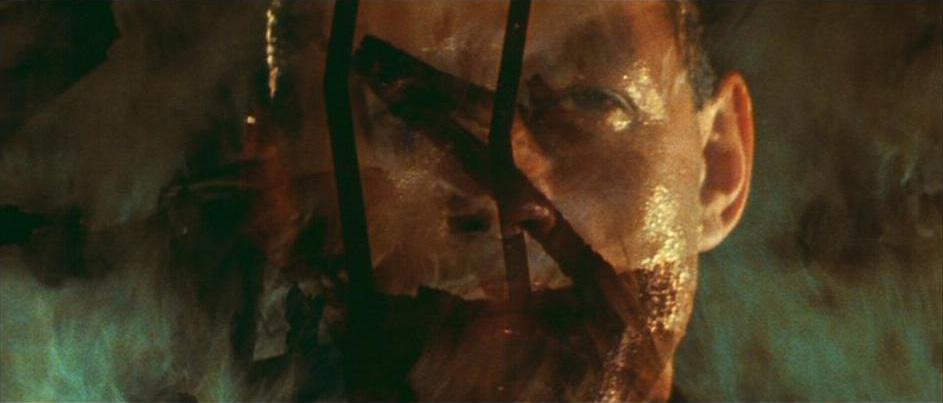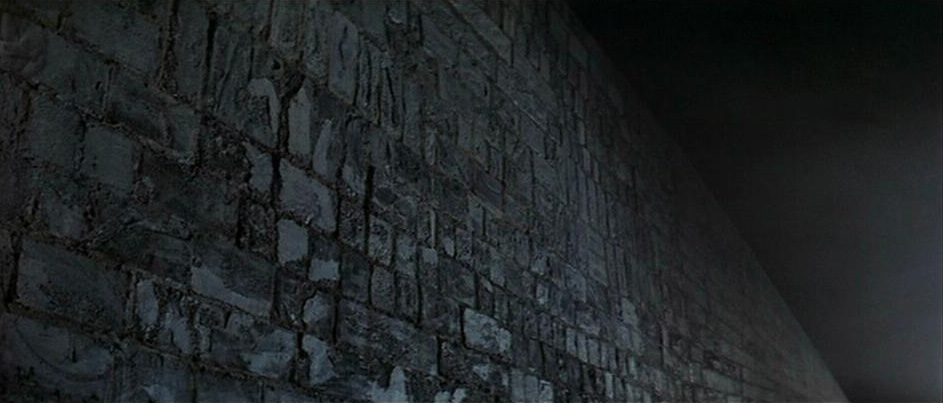Another Brick In The Wall, part 3
[Roger Waters]I don't need no arms around me.
And I don't need no drugs to calm me.
I have seen the writing on the wall.
Don't think I need anything at all.
No! Don't think I'll need anything at all.
All in all it was all just bricks in the wall.
All in all you were all just bricks in the wall.
Song In A Sentence:
Spurred on by the latest brick in his wall – the revelation of his wife’s infidelity – Pink decides to completely isolate himself from the injurious world.
T he final part of the “Brick in the Wall” trilogy aurally explodes with Pink rejecting the world by smashing a TV playing an old war movie. The smash is repeated several times, finally giving way to a familiar guitar riff that is no longer the soft drone in the background as it was in “Part 1,” nor the lively anthem of youthful anarchy in “Part 2.” Rather, the swirling, phaser-laced guitars and synthesizer coupled with the adrenalized heartbeat-like kickdrum coalesce into a savage declaration, with sharp chordal outbursts punctuating the unrestrained lyrics of personal disconnection at the end of each verse. Only fitting, considering that unlike the specific-brick-subjects of the previous two “Brick” songs, “Another Brick in the Wall, Part 3” is a blanket condemnation of all the things in Pink’s life that have led up to this one moment. It is a full frontal attack against the external world itself.
In his 1979 interview with Tommy Vance, Waters described the third brick as Pink “convincing himself really that his isolation is a desirable thing.” Part of that convincing lies in his outright rejection of the things that the world ostensibly offers to lessen the pain of his existential wounds, namely recreational or pharmaceutical drugs to dull the pain, and simple, empathetic human connection to ease the burden. By Pink’s experience, recreational drugs have done little but widen the expanse between himself and the rest of the world, and the arms that have held him have done so only to hold him back. The mother’s loving embrace was one of excessive overprotection, and the wife’s turned out to be nothing more than a Judas kiss, an embrace that ended in betrayal. For Pink, having “arms around me” is just another way of being caged in. In an idiomatic reference to the Old Testament Book of Daniel, Pink proclaims to have “seen the writing on the wall,” a phrase that not only calls to mind the metaphoric wall Pink has built throughout the album thus far, but also the doom he ironically believes will be visited upon him if he doesn’t completely isolate himself. In the Old Testament story, phantom words appear on the wall of the palace of King Belshazzar of Babylon which the prophet Daniel interprets as a dark omen for the king. Sure enough, Belshazzar is slain that very night, and his kingdom is split between the Medes and Persians. Just as Pink can be read as a sort of antithetical literary Christ figure, one might also argue that this specific lyric paints him as an antithetical prophet, as well. In his mind, the “writing on the wall” warns against living exposed to the external world, the bricks constant reminders of the kind of pain that life can bring. In actuality, the bricks aren’t so much reminders of life’s doom so much as doom themselves, with the ominous writing clear only because his wall is so complete. While he fashions himself a prophetic Daniel with this line, ironically enough, his wall casts him in the role of the doomed Balshazzar.
Both the music and Pink’s lyrical rage culminate with a sweeping accusation that “it was” and “you were all just bricks in the wall,” a sort of all-inclusive insinuation that no event and no one in his life is free from blame – that life itself and all the world around him are responsible for the tortured self that he has become. If a personal connection to the world only creates more pain, one can easily imagine Pink reasoning that the only thing to be done is to set the last bricks in place.
Reflecting the sweeping accusations of the song’s lyrics, the film scenes for “Another Brick In the Wall, Part 3” are a veritable hodge-podge of quick shots strung together in a stream of consciousness sequence depicting a number of the metaphorical bricks in Pink’s wall as well as non-narrative events symbolizing his current emotional upheaval. Every personal wound is remembered with a frenzied pace – Pink’s wedding and the wife’s eventual infidelity, the school teacher, the young Pink crawling in bed with his mother, the bombing of his father’s bunker – each one peculiarly intercut with scenes of a full-scale riot complete with exploding molotov cocktails and a wall-like barrier of shielded policemen. The riot is a bit reminiscent of the stampede of concertgoers in “In the Flesh?”, not only serving as a tidy bookend to the first half of the movie but also juxtaposing Pink’s emotional states at the different points of his narrative. The tumult of his metaphoric creation in the album’s first song, though visually chaotic, pales in comparison to the sheer violence inherent in his metaphoric death as he closes himself behind his wall. Alternately, the riot itself – a people’s revolt against the status quo – is suggestive of what Pink is undertaking in this third “Brick,” revolting against the communal notion that one must maintain a personal connection with the exteral world in order to survive. A third explanation for interspersing the non-narrative riot scenes with the personal memories speaks to the nature of life itself; ever one to shift blame, Pink might argue that like a mob uprising growing out of control from rather simple and benign origins, the individual pains of life itself are seemingly slight until it’s too late, their weight grown completely out-of-hand, and all that’s left is a wake of emotional destruction. Just as a riot forms when individual components coalesce and feed off the chaotic energy of each other, so, too, did the bricks of Pink’s wall collect brick by single brick, fairly innocently enough, until one day he turned around and all that was before him was a wall looming high overhead, stretching off to the edge of his mental horizon.
Though not introduced lyrically on the album until “Hey You,” the worms make their first movie appearance in “Another Brick in the Wall, Part 3,” superimposed over two shots of Pink seemingly undergoing an electroshock-type treatment at a mental institution and a screaming woman (most assume the woman is Pink’s wife). While many find evidence enough in this image to conclude that Pink is in “the Funny Farm” (as the backward message in “Empty Spaces” stated), others would argue that like the scenes of the riot, this shot is supposed to be more emotionally evocative than narratively telling. The overlay of the roiling mass of worms speaks to the more surrealistic nature of the shots. (Note, Pink is shown in a similar asylum with the same type of beds during the sequence for “Nobody Home,” though few question the strictly figurative meaning of this later scene.) As for the worms, similar to how they are used throughout western literature, in the Wall they are largely sumbolic of metaphoric death and decay. It stands to reason that they should make their first visual appearance here, in a song that finds Pink on the brink of shutting out the external world and burying himself (metaphorically dying) behind his self-created wall. Though his emotional self has been atrophying for years under the weight of his bricks, the completion of the wall acts as a catalyst of decay, causing him to spiral more quickly into the dark recesses of his dementia.







